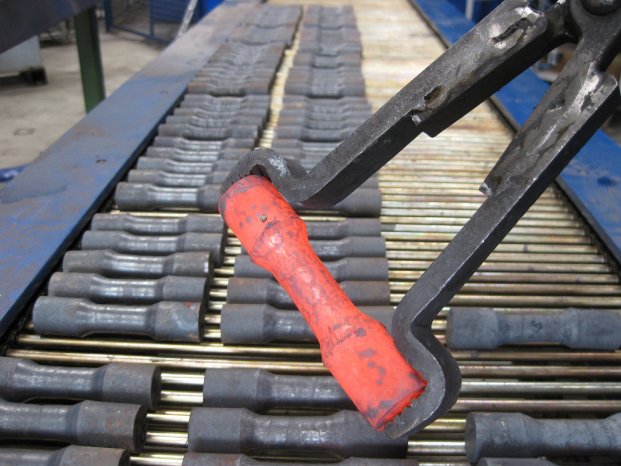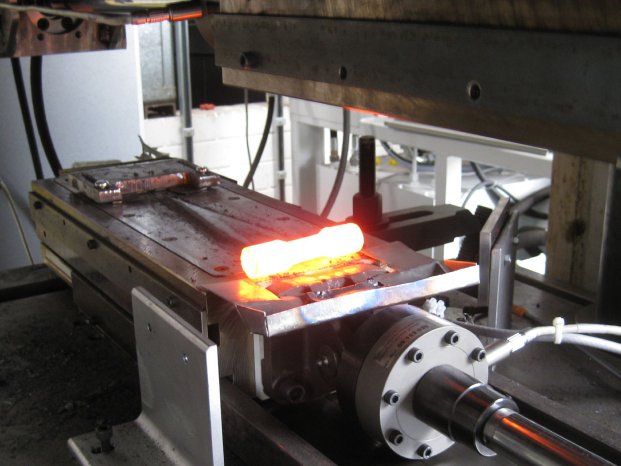Whether producing engine parts, turbine blades or hip implants: Regarding forged parts, the material is the main component of the production costs, especially if a high duty material like titanium is used. During a new research project, IPH aims to develop a process in which less material is needed and which, at the same time, decreases time and energy consumption. This way, the researchers try to reduce the overall production costs significantly. Especially small and middle-sized forging enterprises will benefit from the results.
Die forging is forming of hot metal. To produce complex high duty parts, a single forging step is not enough to realize the complex shape. Therefore, so called preforms are produced during the forging process. To produce these preforms, different techniques are used. In most of the processes a lot of material gets lost: e. g. during machining a lot of excessive material is gradually removed - just like a sculptor removes excessive stone to expose the sculpture. Cross wedge rolling (CWR) is the most efficient way to produce preforms. In this process the hot metal is formed into shape while rolling - just like a pottery maker is forming the figures by spinning the clay and forming it through gentle pressure.
The material utilization in cross wedge rolling is up to 100 percent. Also, less time and energy is needed, compared to machining. A lack of knowledge about the design of a cross wedge rolling process in general and especially for titanium and stainless steel is a main problem for the European forging industry. But particularly for these expensive materials an efficient material utilization has a great benefit. To examine the cross wedge rolling technology, a titanium hip implant will be forged in the research project "CoVaForm". The IPH has gained a lot of experience in cross wedge rolling during several research projects and will now build up a new CWR machine to produce preforms for a hip implant. This CWR machine will be tested at a collaboration partner by the middle of next year.
Funded by the EU, "CoVaForm" started January 1st 2014 and will last for a period of two years. The shortcut stands for "Conservation of valuable materials by a highly efficient forming system". The project consortium consists of four enterprises and three research institutes from Germany, Spain, Italy, Austria and Turkey. This project is financially supported by the European Union as part of the seventh framework program (RP7). The main interest lays in the help of small and middle-sized European forging plants to remain competitive in the international market and therefore help to secure approximately 68000 jobs - the number of people working in European forging plants in 2011. The overall sale in the sector was 12 billion Euros.
Companies who use forged parts for production will benefit in the long run due to more efficient forging processes and lower costs - first of all in the automotive industry, but also in the medical- and aerospace industries.


